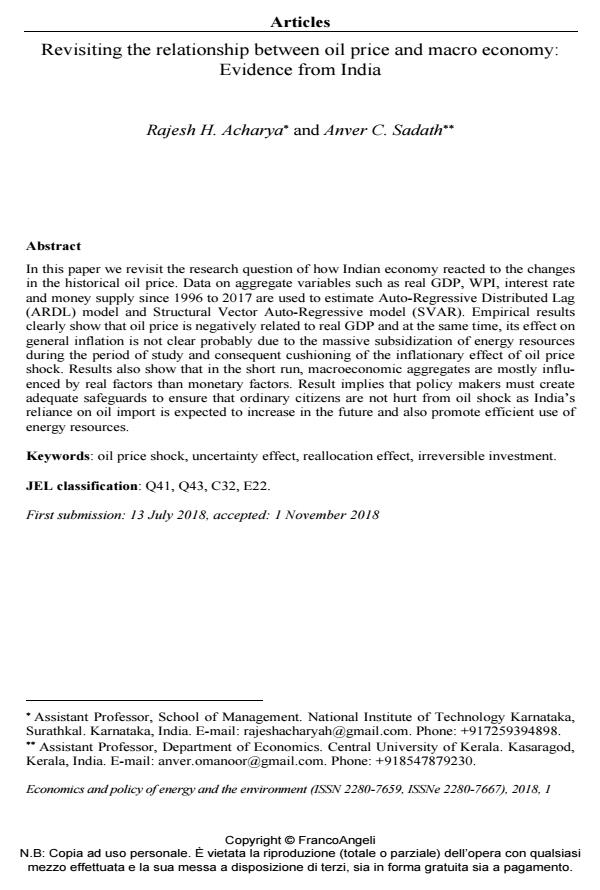Revisiting the relationship between oil price and macro economy: Evidence from India
Journal title ECONOMICS AND POLICY OF ENERGY AND THE ENVIRONMENT
Author/s Rajesh H. Acharya, Anver C. Sadath
Publishing Year 2019 Issue 2018/1
Language English Pages 18 P. 173-190 File size 512 KB
DOI 10.3280/EFE2018-001008
DOI is like a bar code for intellectual property: to have more infomation
click here
Below, you can see the article first page
If you want to buy this article in PDF format, you can do it, following the instructions to buy download credits

FrancoAngeli is member of Publishers International Linking Association, Inc (PILA), a not-for-profit association which run the CrossRef service enabling links to and from online scholarly content.
In this paper we revisit the research question of how Indian economy reacted to the changes in the historical oil price. Data on aggregate variables such as real GDP, WPI, interest rate and money supply since 1996 to 2017 are used to estimate Auto-Regressive Distributed Lag (ARDL) model and Structural Vector Auto-Regressive model (SVAR). Empirical results clearly show that oil price is negatively related to real GDP and at the same time, its effect on general inflation is not clear probably due to the massive subsidization of energy resources during the period of study and consequent cushioning of the inflationary effect of oil price shock. Results also show that in the short run, macroeconomic aggregates are mostly influenced by real factors than monetary factors. Result implies that policy makers must create adequate safeguards to ensure that ordinary citizens are not hurt from oil shock as India’s reliance on oil import is expected to increase in the future and also promote efficient use of energy resources.
Keywords: Oil price shock, uncertainty effect, reallocation effect, irreversible investment.
Jel codes: Q41, Q43, C32, E22 Q41, Q43, C32, E22
Rajesh H. Acharya, Anver C. Sadath, Revisiting the relationship between oil price and macro economy: Evidence from India in "ECONOMICS AND POLICY OF ENERGY AND THE ENVIRONMENT" 1/2018, pp 173-190, DOI: 10.3280/EFE2018-001008